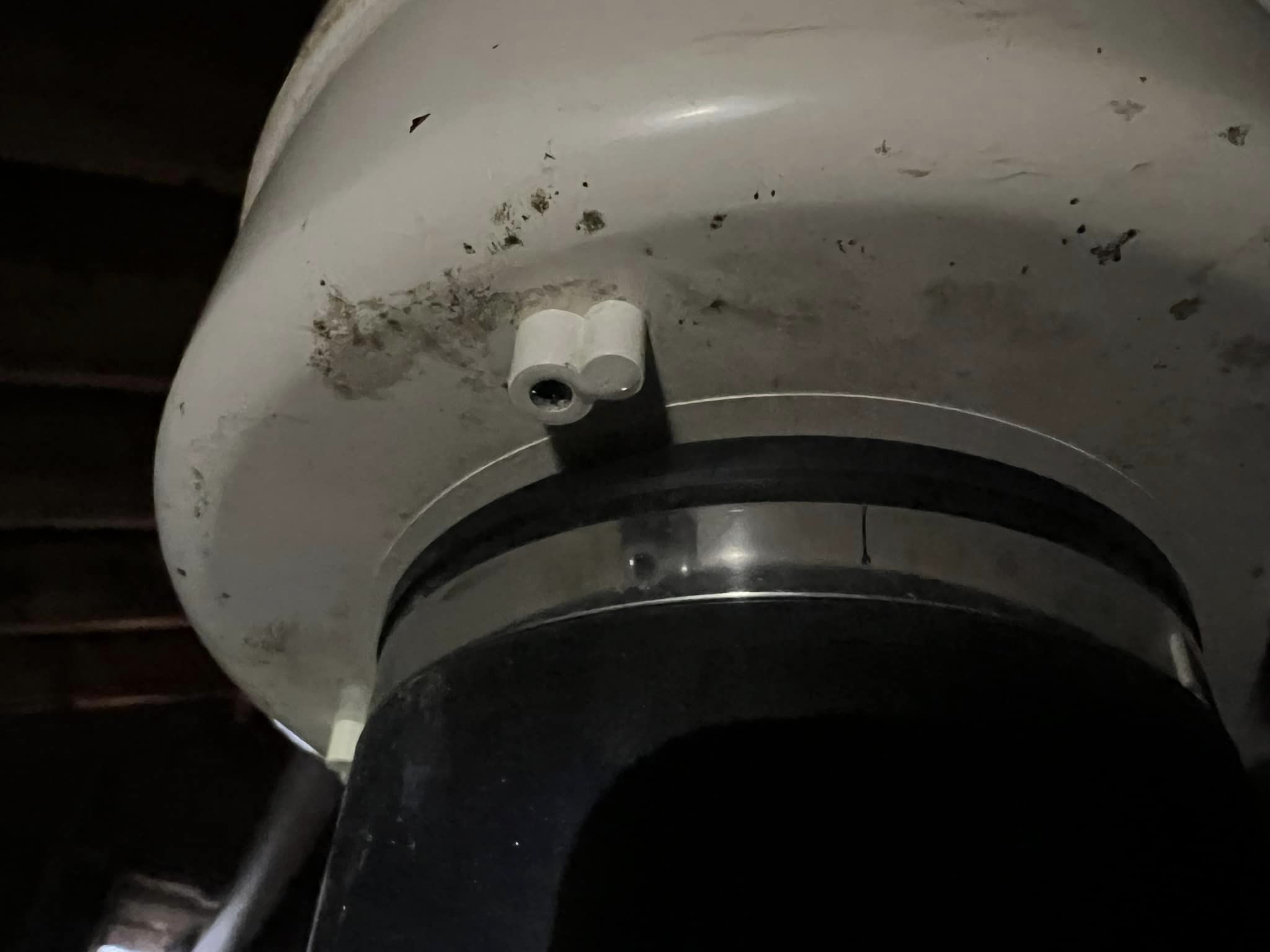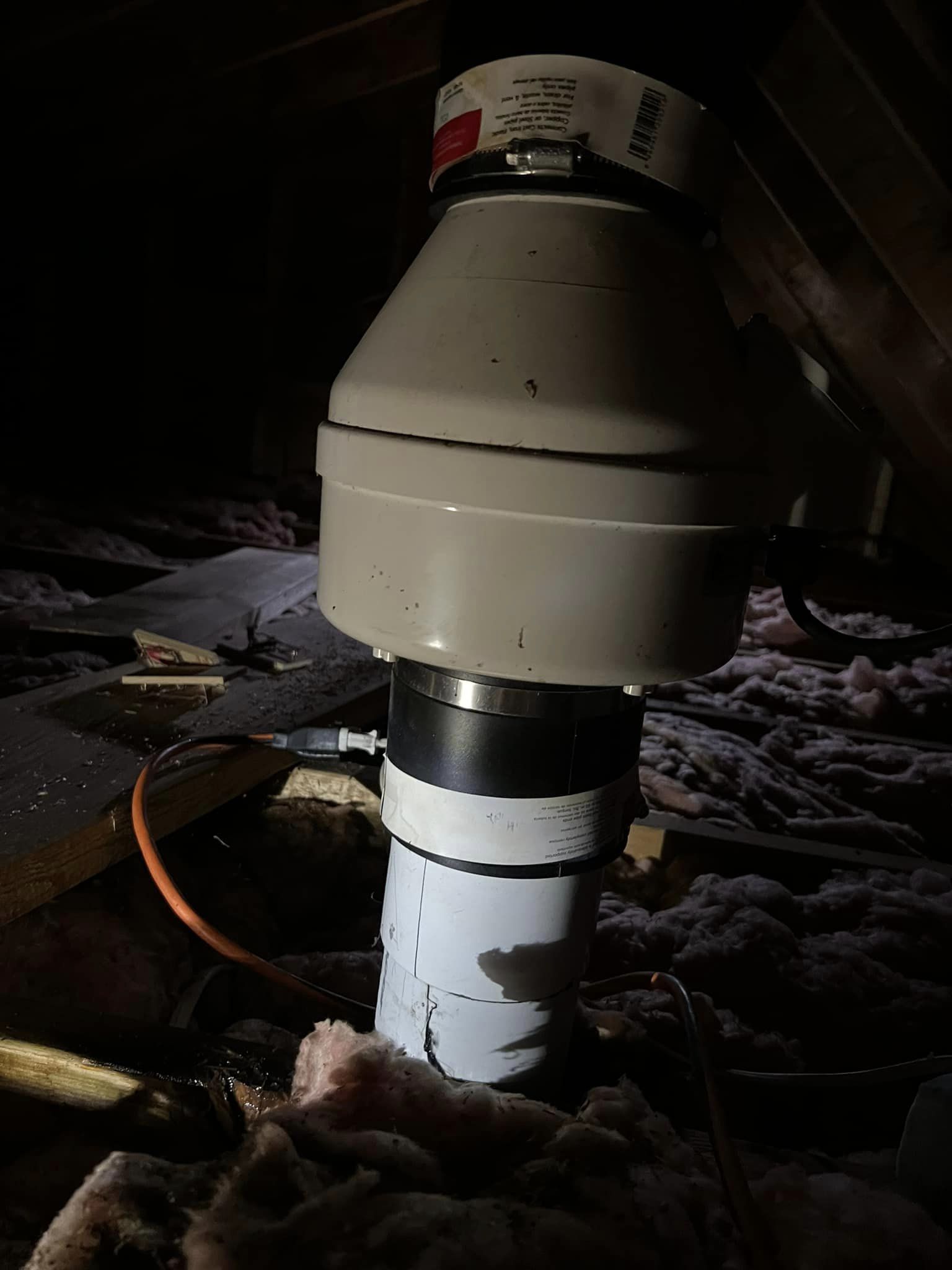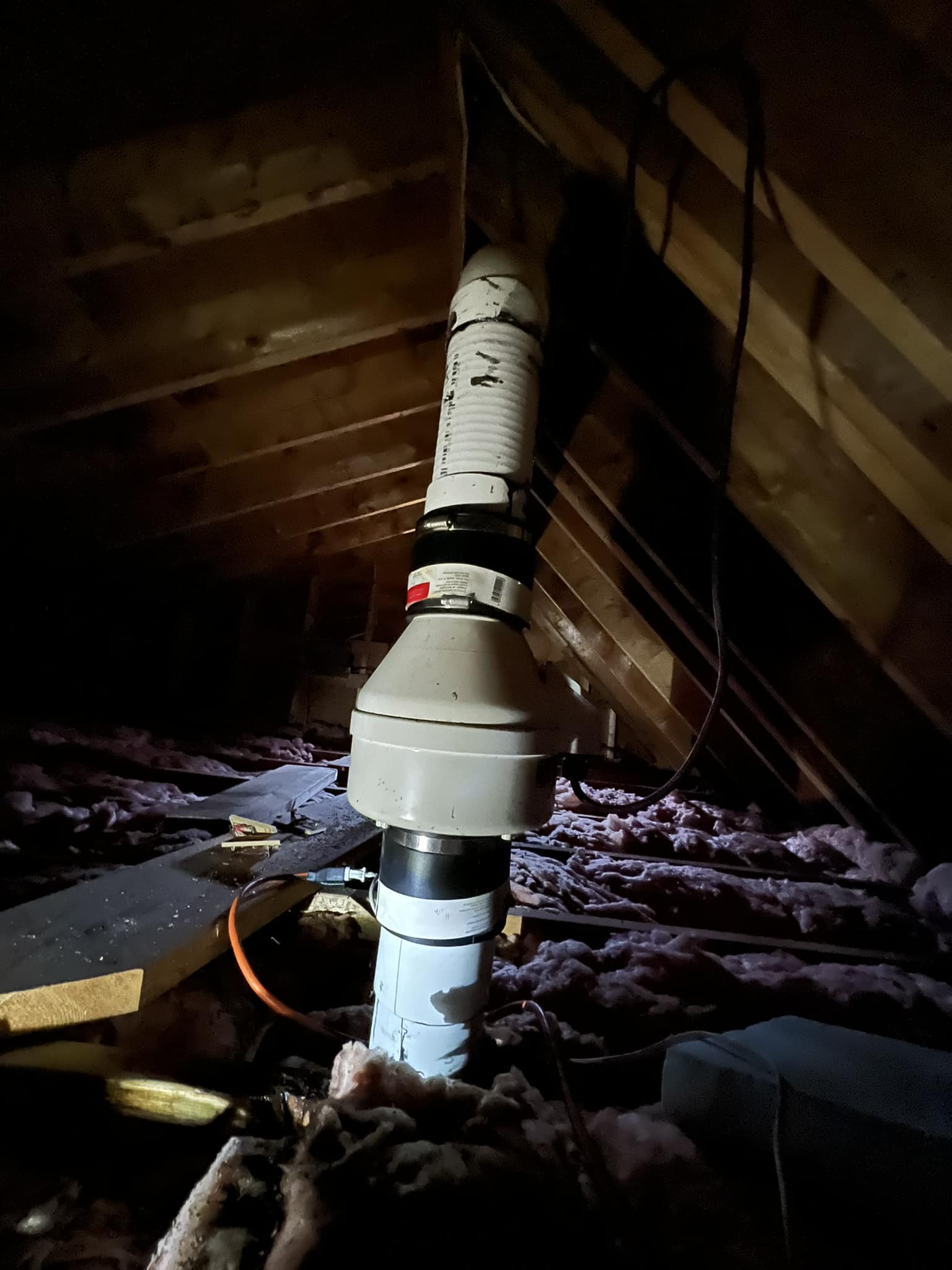How can I address water seepage through radon piping in the attic to prevent damage to the drywall below?
11 months ago
Last Updated: July 26, 2024
Hey, I’ve noticed that the radon piping in the attic has some small holes that are letting water seep out and drip onto the drywall below. Any ideas on how to fix that?



It’s not really helping if it’s just blowing out inside the house.
Hey , could you help me understand what’s not there?
I think I left something outside the house, .
Hey , maybe it’s hard to see from this angle, but the pipe actually curves and goes out through a vent in the attic.
I think I understand now. It seems like the moisture is being drawn in from somewhere. Do you have a sump pump in place?
The water seems to be coming from the slab in my basement and then venting out through the attic.
It sounds like you may benefit from having a sump pump installed. This will help prevent ground water from seeping in.
Make sure there are no obstructions causing condensation.
Hey , do you mind filling me in on what I’m missing?
Hey Christina! It’s possible that the water is from condensation, especially if there are fans in the attic. Make sure the fans are allowing the water to flow back into the pipe instead of sitting in the fan. I’m not entirely sure if that’s the problem, so it might be a good idea to have a professional come inspect it. Radon systems are definitely not something you should try to DIY.
Some units produce a significant amount of condensation. Some models come with the option to attach a drain tube. Another tip is to insulate the pipe in the attic to reduce condensation. Additionally, consider installing a PVC rain cover on the pipe above the roofline. In my area, attic fans are common, but I haven’t observed them causing ceiling stains yet.
Seems odd to keep it in your attic where it would cause condensation throughout the year. Have you checked for leaks around the roof gasket? A simple test is to tie a rag or an old shirt around the pipe above the pump to see if it gets wet when it rains. If not, you could consider creating a tray to catch the condensation from the pump until it evaporates. One way to do this is by cutting a hole in the lid of a Rubbermaid storage bin and placing it around the pipe below the pump. It’s important to remove any wet insulation as it won’t dry out easily.
It’s actually quite common to install radon fans in the attic (I always place the fan in the attic in my designs). If the fan has a condensate drain, it should have a way to drain to an indirect waste.
Have you ever experienced any ventilation issues due to extreme temperature variations between the attic and the space under the foundations during hot summers and cold winters? In Canada, we usually place the pump in the basement and vent it a couple of feet above the ground.
I’ve never had a problem with that. I’m just curious, where do you place the unit when it’s slab on grade?
We don’t see a lot of that type of construction around here, but it’s usually installed in utility rooms.
In Connecticut, the residential building code mandates the installation of a ¾-inch electrical conduit from the basement or room where the electrical panel is located to the attic for potential radon fan use. This conduit should be capped and labeled for future radon mitigation system installation. It seems like the state building inspector’s office is not on the same page as you.
One solution is to use a drain pan. Make sure to also inspect your sump pump. Moisture from the air is being drawn in and collecting on the cold surface.
You could consider running a drain line to the nearest stack.
I’m not an expert, but I believe the condensation is coming from the vent when the air cools down. My radon fan comes with built-in condensation drainage, so the moisture doesn’t affect the motor and instead goes to the sump. There may be condensation drainage kits available for those that don’t have this feature. Have you checked the manufacturer’s installation instructions? FERRET